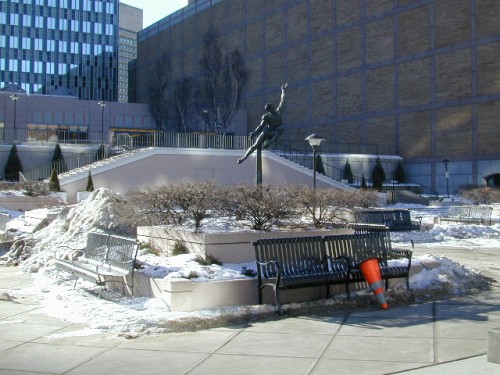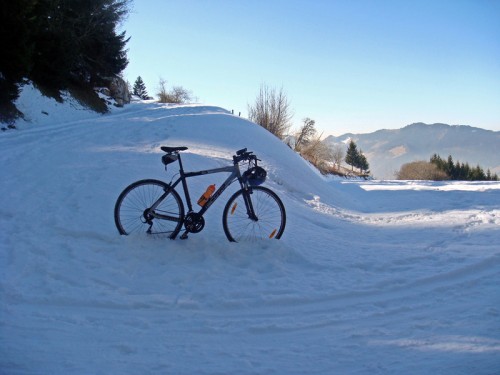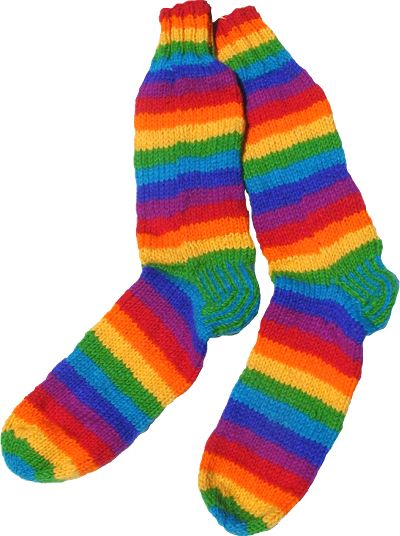Winter Riding In Boston: Dealing With The Cold
Written by Boston Biker on Dec 14I talked about what to do as it gets cold, and how to keep your bike from rusting into a puddle before if you are interested. In this the third installment of the Winter Riding In Boston series we deal with how to stay warm in the cold. Our next segment will be winter riding skills.
You might have noticed, it’s cold out now. It took it’s sweet time getting here, but it is most certainly here now. The winds blow, the air bites, but bike riding can still be fun. Dealing with a Boston winter (and the frigid conditions) is all about two things, staying warm, and staying strong mentally.
Staying Strong Mentally:
You might think that a Boston winter will beat you into submission. It’s dark when you wake up, dark when you come home, it’s cold, the wind blows. It can get grim out there, winter seems to go on and on, and never a warm day in sight. This is far from the case!
Winter on a bicycle is amazing. All the things people like about cross country skiing, hiking in the snow, making a snow man, having a snowball fight, and seeing the beauty of nature is all wrapped up into each bike ride. There are sunny days, and sometimes the wind doesn’t blow. The cold drives a lot of people indoors, leaving you to experience the gentle beauty of newly fallen snow, or simply to experience a rare moment of silence in this busy city. Pushing your bicycle through the gently falling snow is fantastic. The whole world seems to quiet down and the city takes on a unique beauty as it is wrapped in fluffy padding. It’s like nature is putting on a show just for you.
Putting yourself into this frame of mind will really help you move from hating the winter to loving the cold. Plus there are a lot worse things than riding your bicycle in the winter.
You could take the T, but…have you been on the T in winter? Every surface is covered in snot, the air is thick with H1N1, it’s cold, then it’s hot, then it’s cold, then it’s hot again…it also makes that great squealing sound.
Driving is not much better, if your car isn’t destroyed by the salt and ice, there is a good chance you wont even be able to get to it because the snow plows have encased it in several feet of impenetrable snow-ice (snice?). If you do spend a couple hours chipping out a little home for your car, there is a good chance someone will steal it before you get home (sorry putting a chair there is not going to protect your spot). You car is just warming up as you pull into work, and then you have to scrap all the frost caused by that heat before you can go home.
You could walk, but you might get lost in the arctic tundra and eaten by wolves…or at the very least slip and fall on the treacherous ice moguls on the sidewalks. Plus walking is slow, and the longer you are the outside the more time you have to freeze.
Staying Warm:
Once you have girded your loins, (or the mental equivalent of loin girding), centered your winter chi, and generally accepted the fact that it is going to be cold and you are going to make the best of it, you are ready to keep yourself warm.
Like most things in life a little understanding of science will help you out here. Human beings are mammals. Meaning (among other things) that we are “warm blooded.” Specifically that we regulate our temperature, get too hot and you sweat, get too cold and you shiver. Sweating cools you down because the water evaporates off your skin taking the heat with you (this is important, being wet makes you cold!). Shivering warms you up because the muscles that are moving produce heat.
Shivering is a bad sign, it is the first step in hypothermia (freezing to death). You will not want to rely on it for your warmth productions needs. Mitochondria are much better at keeping your temp up. These little buggers live in your cells, consume food and oxygen, and pump out energy and heat. All we have to do is properly manage this heat.
If you get completely naked and walk outside on a icy winter day. You are going to freeze to death. The human being, au natural, is not that good at dealing with cold. We don’t have fur, we don’t have thick layers of blubber, and we don’t have the good sense to hibernate all winter in a warm cave. Lucky for us we have clever brains and nimble fingers and we can put clothes on to stay warm.
What you wear, and how you wear it, has a big impact on how you stay warm. So long as you eat, and breath your little mitochondria are going to be pumping out the heat. It is our job during the winter to trap the appropriate amount of that heat.
I say appropriate, because it is very possible to overheat in the winter. Once you start sweating you will cool down, then you will be wet, and cold. A very uncomfortable situation, and a potentially dangerous one if you are on a long bike ride. Dressing like an arctic adventurer is only going to make it harder to move on your bike, while at the same time making you hot and uncomfortable. “Day 45, the men are sweaty and cold, morale is low. We had to eat the horses.” I digress…
Don’t leave your house warm, you should warm up a couple minutes into your ride. If you are hot when you leave, you will be drenched when you get to work. The general rule is to plan your clothing for 10 minutes into your ride.
A lot of people want to know “what do I wear to keep my: finger/toes/head warm.” Staying warm in winter is about battling two things, wind, and water. You do this with layers. Layers are very important as they allow you to add and subtract clothing to stay the right temperature. If you plan all your winter riding around a single layer of clothing, what are you going to do when it is too cold/too warm for that single layer?
The clothing you will need is the following:
- Something for your head (hat, helmet liner, ear muffs, etc.)
- Something for your hands (gloves, mittens)
- Something for your feet (good socks, boots, special shoes, etc.)
- A base layer, to keep you warm (hoody, long and short sleeve t-shirt, light jacket)
- Outer layer, to keep the wind and water off (wind breaker, performance shell, bigger jacket, etc.)
- Pants, with optional rain pants for the days when it is wet (rain pants also offer good wind protection)
- (you might also be the kind of person that prefers tights, arm warmers, leg warmers, or flannel underpants, adjust to your special needs)
Clothing basically comes in two flavors, low tech, and high tech.
High Tech:
You can buy the latest rain/snow/jacket combo with the super high tech fabric that wicks sweat and has breathing holes, and makes you hot chocolate when you get to your destination. There is a reason these things cost so much, because they are the products of a lot of research and a fair amount of hype. Don’t get me wrong, they work. A high performance base layer, a wind layer (which is often water proof) will keep you warm, and dry, at the cost of several hundred dollars.
If you are interested in going to the high tech route head on over to any outdoor store, they will be more than happy to show you a good base layer, a good wind layer, a good set of gloves, a hat, and the latest in awesome shoe technology. Expect to pay a lot. Frankly I could go on and on about the latest this, and the high tech that, but I will leave the sales pitch to the people at the clothing store. All of it works about the same, with minor differences in performance, and price.
Low Tech:
If you don’t have $500 to outfit yourself with the latest in high tech weather gear you will want to kick it low tech. This is how I roll, for two reasons, I don’t have a lot of money, and I have found that it works very well. Here are some examples of low tech solutions to the clothing categories mentioned above.
Head:
Put packing tape over the vents in your helmet, you now have a wind proof helmet.
Wool helmet liners are cheap and do an amazing job of keeping your head warm.
Cycling caps offer added protection against blowing snow and ice (the brim blocks it from your eyes).
Grow a beard, if you are able a beard can keep your face warm.
A scarf works wonders to keep cold off your lower face, and works well for the non-bearded. It can also help to keep cold air out of your lungs. I get raspy lungs if I breath in cold air, so you will find me rocking a good wool scarf all winter. Put the scarf under your eyes, but over your nose, if done correctly this will keep hot breath from steaming up your glasses (if you have them).
Balaclava’s and face masks are also very popular.
Hands:
5 dollar cheapo mittens with fingers and a pair of cheap thinsulate gloves combined create a fantastic and warm glove combo that allows you still move your fingers.
Plus these
Work wonders, just open the flap if your fingers get warm, put it down if cold. If you want to make them more waterproof put a rubber glove on first. (very low tech)
Feet:
I rock wool socks during the winter. They are warm even when wet, don’t smell (that badly) when wet, and still fit inside my shoes. For extra water proofing I will put my socks on then put a plastic bag over my socks, then put my shoes on. Water proof (to an extent) but also protects against wind.
Base layer:
I wear a long sleeve t-shirt, with a short sleeve t-shirt over it. On top of that I put a good hoody. That’s it for the top. On the bottom I wear a pair of running tights (spandex like material), under a pair of jeans. This keeps me very warm on non-windy days.
Wind/water layer:
If it is blowing/snowing/slushing I will throw a jacket on over my hoody. If it is really nasty I will put on rain gear over my base layer. This keeps me warm (often too warm) and dry. On my legs I will add a pair of rain pants over my jeans, this has always kept me very very warm, and dry.
In certain very crazy situations I have been known to wear wool arm warmers, but on most days these make me too hot, the nice thing about arm warmers is you can pull them down if you get too hot without taking them off. Layers layers layers!
General Tips:
Keep moving! Moving your body makes heat, if you can lower your gearing (if you have a single speed), or put your bike in an easier gear. This will keep your legs moving more and keep you warmer.
Heat is stolen by wind and water, if it is windy or wet out don’t forget your wind/water layer! If you can stay dry, and keep the wind from penetrating to your skin you can pedal through just about anything comfortably.
Don’t over bundle your extremities. A common thing people do with both gloves and shoes is that they put way too many layers on cutting off blood flow to your feet and hands is a great way to make sure they are cold no matter how many layers you have one. If you can’t feel your fingers or toes when you get to work it might be because you have too many gloves or socks on.
If you are having trouble with fogging glasses you can try putting shaving cream on them (then wiping is off), there is a product called CatCrap that skiers use, I have also heard that rubbing the fog off with your finger works.
If you have any good staying warm tips share them in the comments, or if you have questions drop them there as well and I will see if I can answer them.
If you ride all winter and want to proclaim your street cred pick up one of our great “This bike survived a Boston winter” stickers at the store.
Tags: boston, clothing, staying warm, winter riding
Posted in education, Merch | 11 Comments »










Sorry, comments for this entry are closed at this time.